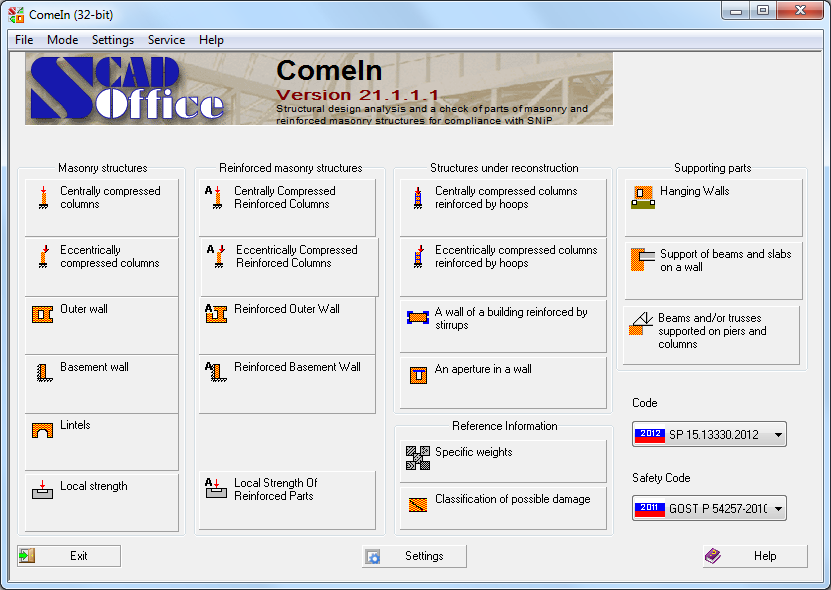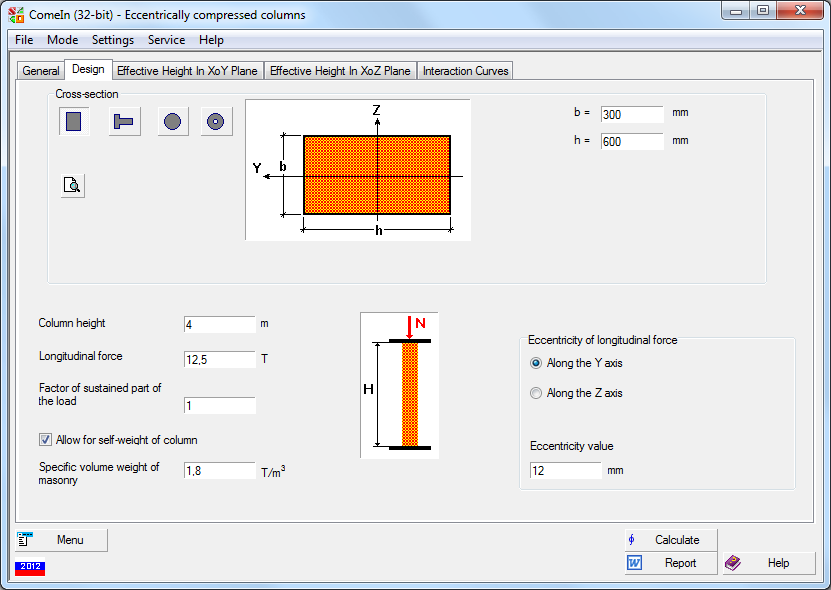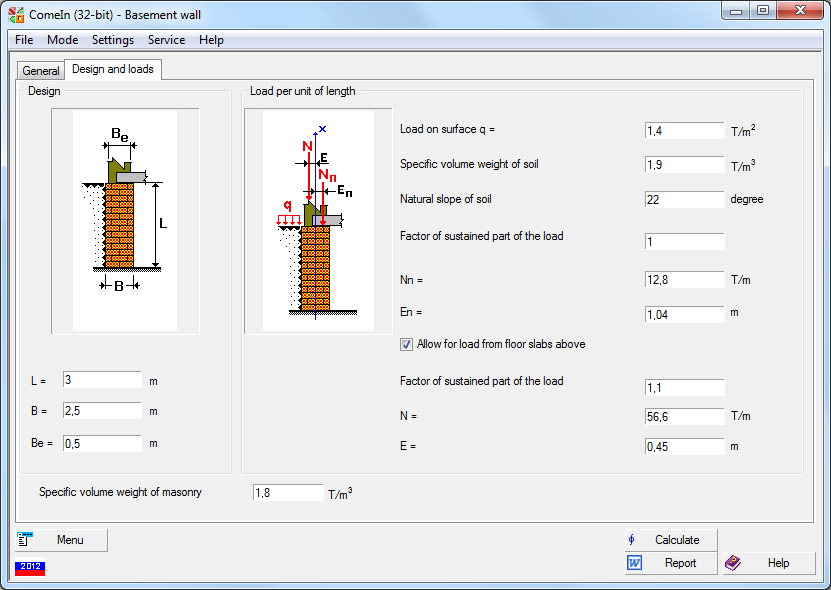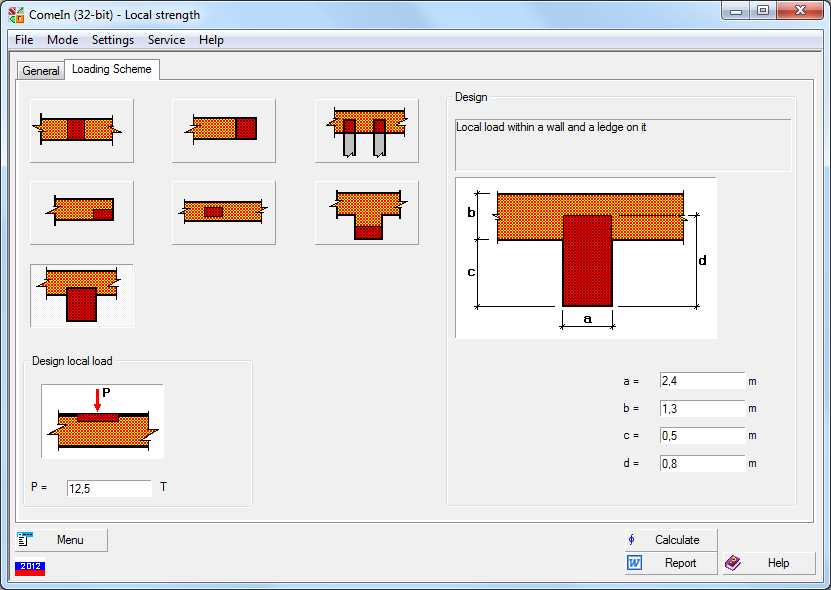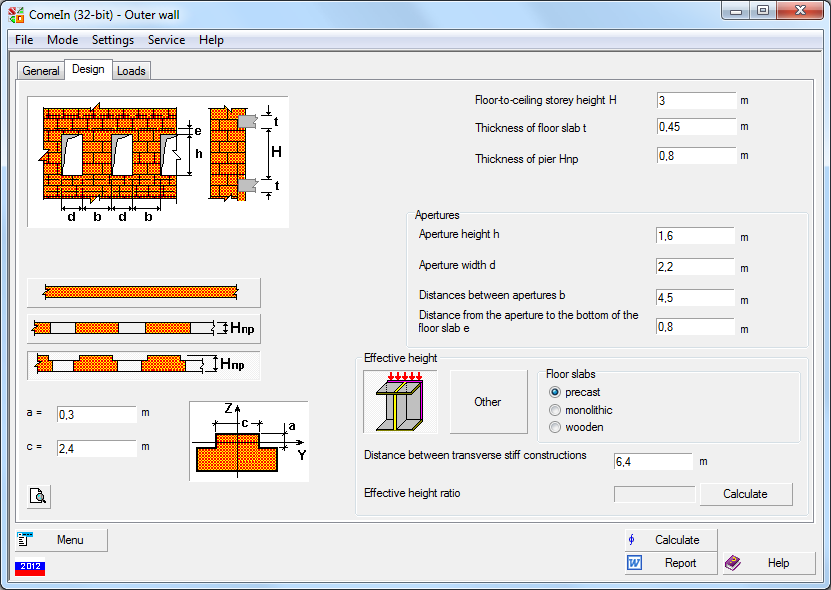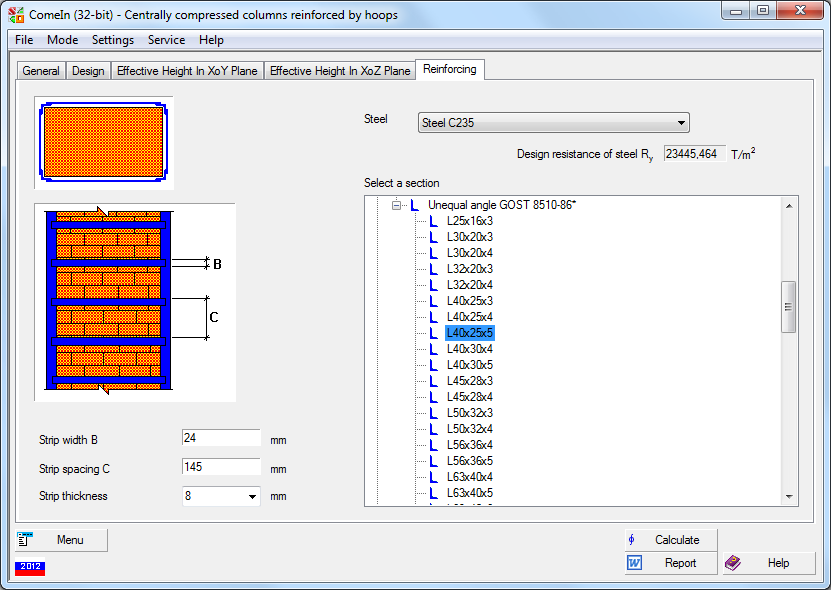COMEIN enables you to perform checks of load-bearing capacity of structural members of masonry and reinforced masonry structures for compliance with requirements of SNiP II-22-81 “Masonry and Reinforced Masonry Structures”, EN 1996-1-1, DBN B.2.6-162:2010, KMK 2.03.07-98, SP 15.13330, and documents related to these codes.
The following elements can be checked by the application: axially and eccentrically loaded columns of various cross-sections in their plan; masonry lintels — coursed, Dutch, and arched; reinforced concrete lintel beams; exterior and interior building walls with and without openings; basement walls.
Along with the check of the general strength and stability of members, there is a check of the local strength at the areas of bearing of beams, purlins, and other members on walls and columns.
The checks are performed both for undamaged structural members and for those with cracks in masonry and fire damages caused by high temperature. “Recommendations for Strengthening Masonry Structural Parts of Buildings and Structures. V.A. Kucherenko CSRIBS of the State Construction Committee of the USSR” document was used in the checks of damaged structures.
Another subject of checking is the load-bearing capacity of axially and eccentrically loaded members reinforced by steel battens, and of walls weakened by additional openings.
The modes can be classified into five groups four of which are used to perform various checks (Masonry Structures, Reinforced Masonry Structures, Structures Under Reconstruction, Support Joints), and the fifth one provides reference information (Reference Information).
Masonry Structures
Modes of this group enable to perform checks of the following individual structural members of masonry structures: axially compressed columns, eccentrically compressed columns, external walls, basement walls, lintels. Moreover, the checks of the local strength at the bearing areas of beams etc. are performed as well.
Reinforced Masonry Structures
Modes of this group enable to perform checks of the following individual structural members of reinforced masonry structures: axially compressed reinforced columns, eccentrically compressed reinforced columns, reinforced external walls of a building, reinforced basement walls. The local strength of reinforced structural members can be checked as well.
Structures under Reconstruction
Modes of this group enable to perform checks of the following individual structural members of masonry structures including the damaged ones and reinforced by steel battens: axially compressed columns reinforced by battens, eccentrically compressed columns reinforced by battens, building walls reinforced by battens, openings in a wall.
Support Joints
Modes of this group enable to perform a detailed check of the areas of beams, slabs, and trusses bearing on masonry (and reinforced masonry in some modes) walls and columns. Moreover, the strength of hanging walls is checked in the areas of the foundation beams bearing on fixed supports.
These modes are essentially used to check the local strength of the support joints, taking into account peculiarities of their designs and a static model of the structure.
The following members can be checked: hanging walls, bearing of beams and slabs on a wall, bearing of beams and/or trusses on piers and columns.
Reference Information contains specific weights of masonry of brick, natural or artificial stone with heavy-weight mortars, and a damage classification for masonry.
Interface
COMEIN functions under Windows operating environment. All the windows, dialog boxes and controls are fully consistent with this environment.
Help (Reference information)
The application is provided with a detailed help which includes descriptions of the user interface and conventions of using the application.

